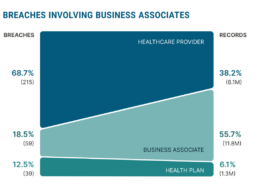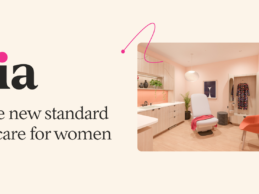What You Should Know:
- Critical Insight, the Cybersecurity-as-a-Service provider specializing in helping critical organizations Prepare, Detect, and Respond in today’s threat environment releases its H2 2022 Healthcare Data Breach Report, which analyzes breach data reported to the U.S. Department of Health and Human Services by healthcare organizations.
- The number of data breaches affecting healthcare providers declined in the second half of 2022, consistent with a downward trend over
Read More
Medical Records | Health Information Management | Revenue Cycle Management
FHIR Adoption and Implementation Challenges
The Fast Healthcare Interoperability Resources (FHIR) standard was introduced by HL7 in 2014 as a significant replacement for the HL7 V2 and V3 standards. An open standard called FHIR, which was initially drafted in 2011 makes it easier than ever for legacy systems and new apps to exchange data. FHIR was created to not only increase communication efficiency and interoperability compared to earlier standards but also to facilitate implementation by giving clear specifications and allowing
Read More
Electronic Transactions Can Benefit Partnership Among Physicians, Insurers and TPAs
The patient is at the center of the healthcare experience, and rightfully so. However, a strong case can be made to place the physician at the center. After all, it’s the physician who diagnoses and treats the patient.
Insurance companies and third-party administrators (TPAs) also have critical roles to play in the care experience, bringing together networks of physicians, specialists, surgery centers, hospitals, ambulatory care centers, and more to create a comprehensive care experience for
Read More
The New “Front Door” to Healthcare Can Only Open Fully with True Interoperability
Some people think of retail pharmacists as standing behind the counter bottling pills, answering insurance questions, or discussing side effects with a customer.
But the COVID pandemic fundamentally changed the role of the neighborhood pharmacist, from primarily dispensing medication to increasingly being the source of urgent and primary care for patients. With the successful administration of more than 300 million COVID vaccinations, an ongoing doctor shortage, and
Read More
Tia and Cedars-Sinai Partner to Enhance Women’s Health
What You Should Know:
- Tia, the modern medical home for women, announced that it is teaming up with Cedars-Sinai, one of California’s leading health systems, to expand access to primary and specialty care for women across Los Angeles. Together, the two healthcare leaders will provide and enhance high-quality physical, mental and reproductive healthcare for more than 100,000 women throughout the Los Angeles region.
- The deal -- which includes opening multiple clinics throughout LA -- will
Read More
Why Patient Portal Usability is Critical to Patient Experience
Improving patient experience is a primary concern for behavioral health providers today. A positive patient experience can keep clients returning, while a frustrating or confusing experience may push them away. With so much on the line, it’s important to get it right. One of the most powerful tools in a behavioral health practice’s arsenal is a user-friendly, highly functional patient portal. These portals are often clients’ main point of connection to a practice outside of appointments.
What
Read More
60% of Consumers Lack Immediate Access to Their Medical Records
What You Should Know:
- Carta Healthcare®, a pioneer in harnessing the power of clinical data, have announced the results of a survey regarding patient healthcare data access in the United States.
- The results reveal that 60% of consumers don’t have immediate access to their medical records, and another 17% don’t know if they do. Furthermore, 66% of respondents indicate they don’t know where their data goes after they leave their healthcare provider’s office.
Insights regarding data
Read More
The Seemingly Limitless Potential of Blockchain in Healthcare
Interoperability remains the Holy Grail in healthcare, the goal to which all organizations aspire. The urgency to remove silos and improve communication between various systems and organizations is paramount, as it promises to lead to greater efficiency and improved outcomes while at the same time lowering costs – and not a moment too soon, given the fact that the world’s population is aging and there is a growing shortage of clinicians.
More and more, blockchain – a secure, decentralized
Read More
Healthcare AI Transformation: 9 Executive Predictions to Watch in 2023
Piotr Orzechowski, Co-Founder and CEO of Infermedica
Innovation areas to watch: One of the exciting areas of applied machine learning recently is so-called Generative Tech. Some say it’s the biggest change to the Internet since crypto was invented. Generative Tech is developing at an unprecedented pace and many of us already had a chance to enjoy images created by OpenAI’s DALLE-E or content generated by GPT-3 language model. However real-world applications of generative tech in health are
Read More
9 Executive Revenue Cycle Predictions/Trends to Watch in 2023
Nate Maslak, the co-founder/CEO of Ribbon Health
Price Transparency: In 2022, we saw CMS’s Transparency in Coverage rule go into effect, requiring non-hospital entities like health plans and providers to publish publicly available rates for care. In 2023, we’ll see this price transparency data become more mainstream as it finally makes its way into the hands of patients, empowering them to find the best care for them, reevaluate their care choices, and shop around for the best possible care
Read More









